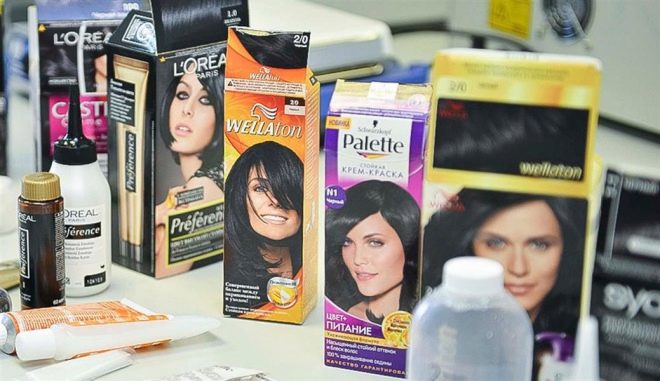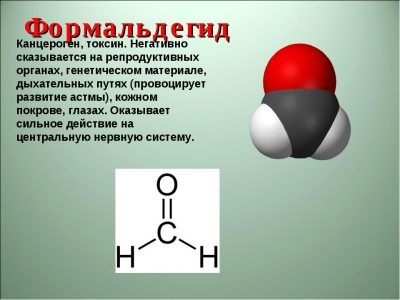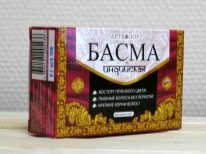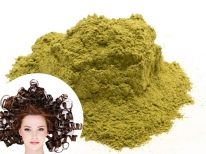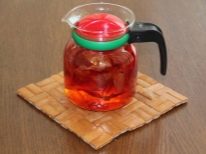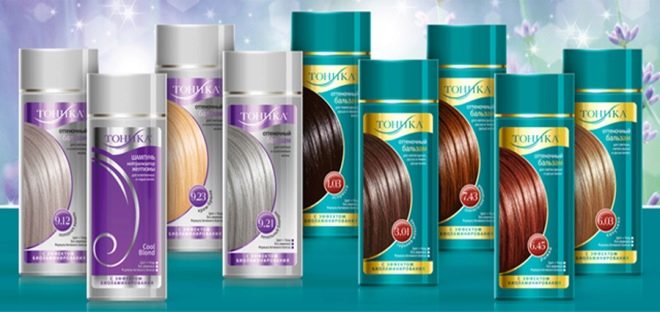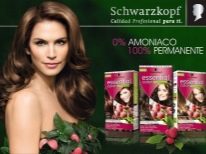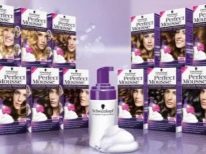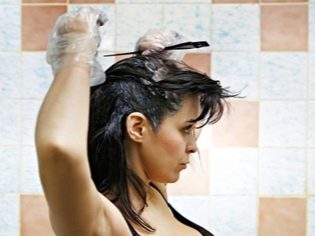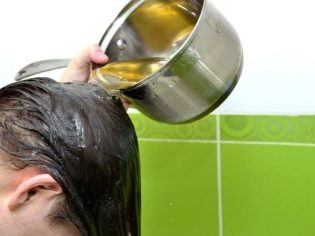Is it possible to dye hair nursing mom? All the pros and cons, the opinions of doctors
Many women fear dye hair during pregnancy and look forward to giving birth, so that after they finally get their hair in order. But breastfeeding, which imposes a lot of prohibitions and restrictions on habitual actions, diet, woman's regime, raises a new question - is it possible to combine it and dyeing hair. It's not as simple as it seems.
Impact
On the question of whether it is possible to dye the hair of a nursing mother, the majority of hairdressers answer that it is quite possible to do this, no special problems will arise. But doctors are not so optimistic. Few of the representatives of the fair sex usually think about the composition of coloring agents, how few people can imagine how exactly the substances in the composition of paints act on the female body, and whether they can penetrate into the composition of breast milk after birth.
Any hair dye is a product of the chemical industry. The effect of it is based, in fact, on one of two principles: the tool either destroys its own coloring pigment in the hair structure, or changes the pigment to another due to the presence of certain coloring potent substances. To fix the result, stabilizers, preservatives, fixers are introduced into the paints.
Hair dye is the presence of a coloring pigment and an oxidizing agent that will make the pigment aggressive. Resistant hair dyes usually contain ammonia, hydrogen peroxide, and oxidant pigments. Ammonia loosens the hair structure so that the dye can get into the deepest layers of the hair. It has a sharp characteristic odor and when inhaled quickly enters the body. It is highly allergenic and dangerous to the mucous membranes of the respiratory system. Parabens are almost always present in pigments. Phenylenediamine or PPD is found in 80% of all existing paints (look at the packaging and see for yourself).
The substance increases the likelihood of developing cancer, is toxic to the organs of the immune system and the nervous system, liver and kidneys. He is considered the "culprit" of the development of long-term asthma. Resorcinol in the composition of paints violates the hormonal background, contributes to the formation of sexual dysfunctions, the formation of excess weight.
Hydrogen peroxide is also far from being as harmless as it may seem - it is a potent allergen, and its clinical effects confirmed its toxic effects on the lungs and digestive organs.
The lead acetate in the composition of paints is toxic to the brain, it quickly penetrates into the composition of breast milk, once in the body of a woman. Both formaldehyde and ethanolamine are dangerous.
The question arises - can these hazardous substances enter the woman's body? They can, but in small doses. Famous pediatrician Yevgeny Komarovsky says that the penetration of the dye by the percutaneous method by contact of the coloring matter with the skin of the head, hands is not so terrible as the inhalation of the hazardous substances listed above is dangerous. When inhalation penetration chemicals are more active, they immediately penetrate into the bloodstream and quickly find themselves in the composition of breast milk.Equally dangerous from this point of view during lactation are not only hair coloring products, but also nail polishes, and, in general, paints and varnishes, for whatever they are intended.
The risks are not so great, according to Komarovsky, if a woman paints not at home, but in the cabin, and then has the opportunity to take a walk in the fresh air, clean her lungs, if the paint is chosen not for reasons of economy, but for reasons of quality and the most gentle composition (completely safe colors, by the way, does not exist). But even in this case, according to Komarovsky, there is a risk of penetration of toxins into milk.
If the problem of coloring hair is not too acute, it is better to wait for the period when breastfeeding is completed. If it is a matter of life and death, and the husband has already begun to glance at the well-groomed female employees and more often he looks away from his wife, whose hair has grown almost half the length of hair, Yevgeny Komarovsky recommends to still dye your hair, but with the observance of all precautions.
Can staining harm a child?
Painting with resistant paints, which contain the maximum amount of harmful chemicals, may well harm the child, especially if a woman during lactation neglects the rules of safe use of paint - stained in cramped and closed room, which is not ventilated, for example, in the bathroom. In this case, she can inhale a fairly large amount of chemicals that are dangerous for HB not only for her, but also for the baby.
Ammonia penetrates breast milk faster than others. He acts on his mother locally, irritating the mucous membranes of the respiratory organs, and systemically. Ammonia has only a systemic effect on a child, similar to poisoning. The dose of ammonia in breast milk, of course, is low, and therefore the symptoms most often relate to mild disruption of the nervous system. The baby can become more capricious, whiny, he may have more often regurgitations, sleep disorders.
A large dose of ammonia in breast milk (if a woman breathed a poisonous substance for several hours) can adversely affect the condition of the baby’s heart, liver, and kidney function.
No less dangerous exposure to formaldehyde and parabens. These substances disrupt the functioning of the internal organs, which, in a small dose present in breast milk, can cause intoxication of the internal organs, laryngeal edema, impaired kidney function, and endocrine disorders.
As already mentioned, doctors do not support the idea of dyeing hair during the breast feeding period. It is clear that all toxic substances pass into breast milk in small quantities, and this can be said to be a plus. But the disadvantage is that there are a lot of these substances, and together they can negatively affect the health and well-being of the infant.
What paint to choose?
If, nevertheless, it is necessary to carry out the staining, one should carefully approach the question of choosing the safest means for this. The best option during breastfeeding are natural dyes, for example, henna or basma. And also a woman can correct the color of her hair with folk remedies, such as:
- chamomile decoction - for fair-haired women, it gives a light golden shade to the naturally light hair;
- lemon juice - for blondes and light blond, has a slight lightening effect and eliminates greasiness of hair;
- oak bark decoction - gives brown-golden tint to brown-haired hair;
- broth of onion peel - copper-chestnut shade for brown-haired women, brunettes and red;
- basma - for dark hair;
- natural henna - for red.
Clarify folk remedies will not work, because all the tools that eliminate the structure of the hair's own natural coloring pigment, are chemical and dangerous.
A woman during lactation can take advantage of the possibilities of the so-called organic staining.The paints that are used for it, 90% consist of natural ingredients. This is a non-ammonia paint. However, you should know that the means for coloring without ammonia is not at all devoid of a number of other harmful substances, for example, parabens. In addition, the absence of ammonia as such does not make the paint resistant, the color will quickly “wash out”, fade, come off the hair. These paints are expensive. Given the fragility of the effect obtained from them, additional staining may be needed very soon.
A woman who is breastfeeding can take advantage of shampoos, gels, balms - the effect of such cosmetics can also be called persistent, but it is as harmless as possible.
Here is a list of colors that are most suitable for nursing mothers:
- Garnier Color Shine;
- Schwarzkopf Perfect Mousse;
- Estel Professional Deluxe Sense;
- Schwarzkopf Essential Color;
- Wella Color Touch;
- Matrix;
- SanoTint;
- L'Oreal Casting Creme Gloss.
They should also be used in compliance with all precautions recommended by the manufacturer and only when absolutely necessary. If a woman did not dye her hair before giving birth and decided to do it now simply in order to change her image, to bring something new into her appearance - with repainting it is better to wait until the end of breastfeeding.
How to reduce harm?
Special attention, as follows from the above, should be given to safe staining measures.
- It is best to wait for the first 3 months and begin to dye the hair when the baby gets a little stronger, and the lactation is fully adjusted.
- It is not necessary to be painted too often, changing the hair color once a fortnight - a month. One procedure at 4 months is enough.
- Do not save on the cost of a cosmetic product - cheap paints rarely meet international safety standards.
- Choose paints that do not contain ammonia, aminophenol, formaldehyde, and parabens.
- Turning to a beauty salon, be sure to warn the master that you are a nursing mother. In this case, the specialist will be more attentive to the choice of means for dyeing or will immediately offer you an organic painting procedure.
- Self-staining at home with HB is undesirable, but if it is unavoidable, then try to hold the procedure in a well-ventilated place so that neither you nor the child can breathe in possible chemicals from the paint. This room can be a balcony or loggia. Remember, if the paint does not smell of ammonia, it does not mean that it is completely safe.
Carefully read the instructions attached to the tool, do not neglect the gloves, try not to overdo the paint on the hair.
If there is an opportunity to make partial staining in which the scalp is minimally in contact with the composition of the product. (for example, highlight or ombre), do it.
Do not ignore the good wishes of manufacturers to test for allergies. Even if such a paint did not cause negative allergic reactions before pregnancy, this does not mean that in conditions of weakened postpartum immunity and a new hormonal allergy for a woman will not occur. Apply a little on the back of the skin and watch for about 40 minutes. When redness, blistering, itching staining with this tool should be discarded.
Use a respirator, a gauze bandage with a cotton pad - this minimizes the amount of harmful substances that can get into the respiratory tract and bloodstream. Do not hold the paint on the hair longer than required by the instructions.
All about dyeing hair during breastfeeding, see the following video.

